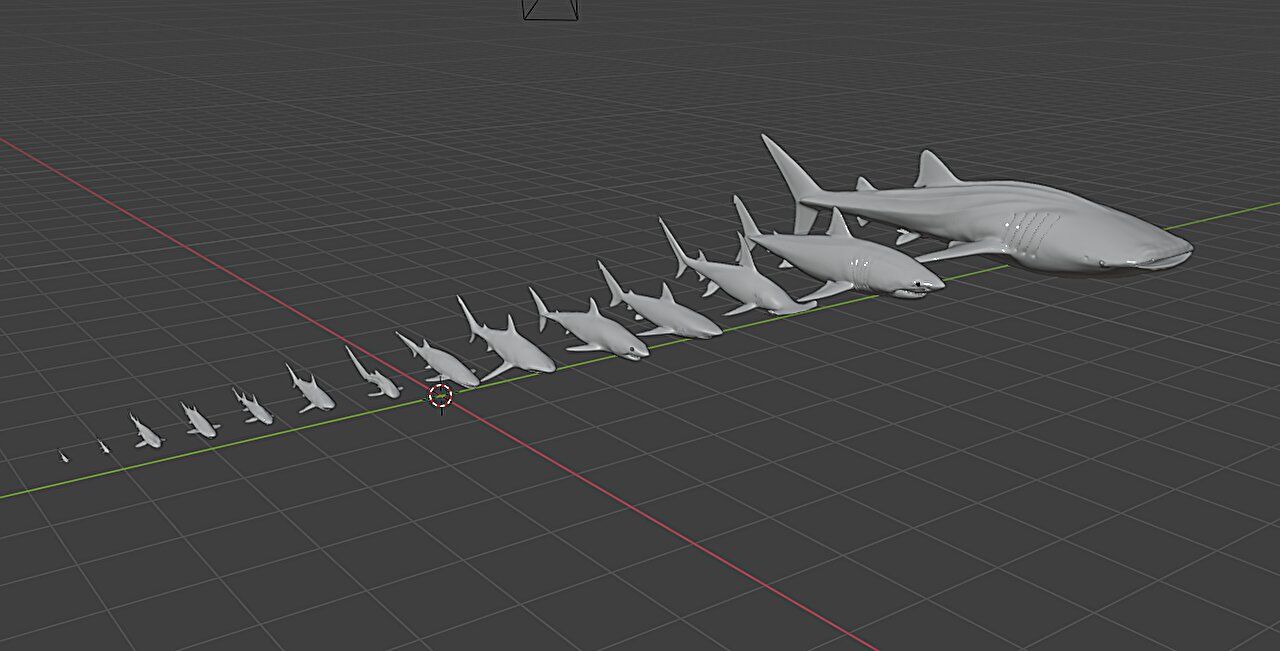🦈 Shark anatomy follows a mathematical law
Follow us on Google News (click on ☆)
The research, published in Royal Society Open Science, reveals that sharks adhere almost perfectly to the 'two-thirds law'. This law describes how an animal's surface area and volume change with its size. Scientists used high-resolution 3D scans to analyze 54 shark species.

3D modeling of a shark to study its surface area and volume.
Credit: James Cook University
The results show that sharks' surface area is proportional to their volume raised to the power of 0.64, very close to the theoretical prediction of 0.67. This discovery is important for understanding how sharks exchange heat and oxygen with their environment. The study suggests sharks have evolved to maintain this specific ratio.
Modern imaging technologies enabled these breakthroughs. 3D models provide unprecedented accuracy for measuring physical characteristics. This method could be applied to other species to test fundamental biological theories.
What is the 'two-thirds law' in biology?
The 'two-thirds law' is a theory predicting how an animal's surface area and volume change with size. It's fundamental for understanding energy and heat exchange between an organism and its environment.
This law suggests an animal's surface area is proportional to its volume raised to the power of 0.67. This means that as an animal grows larger, its surface area increases, but not as fast as its volume.
The implications of this law are vast, affecting everything from respiration to thermal regulation. It helps scientists predict how animals respond to environmental changes.
Confirmation of this law in sharks through 3D models strengthens its validity and applicability across the animal kingdom.
Why are sharks ideal models for this study?
Sharks display diverse sizes and shapes, making them ideal subjects for studying biological laws across multiple scales.
Their varied lifestyles, from deep waters to coral reefs, allow testing the robustness of the 'two-thirds law' in different environments. This shows how evolutionary constraints shape animal biology.
Moreover, sharks are apex predators playing a key role in marine ecosystems. Understanding their physiology helps predict how climate change might affect these ecosystems.